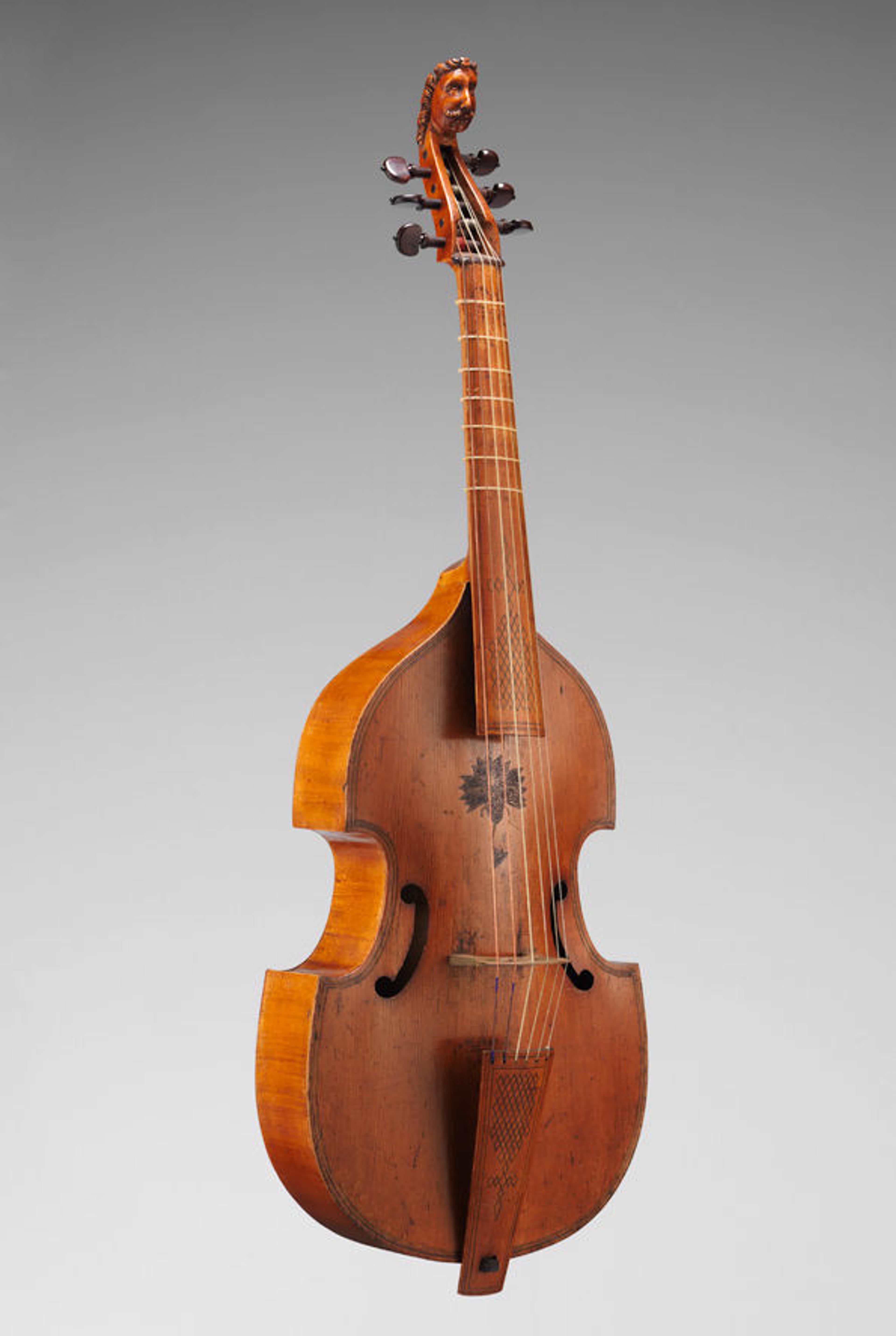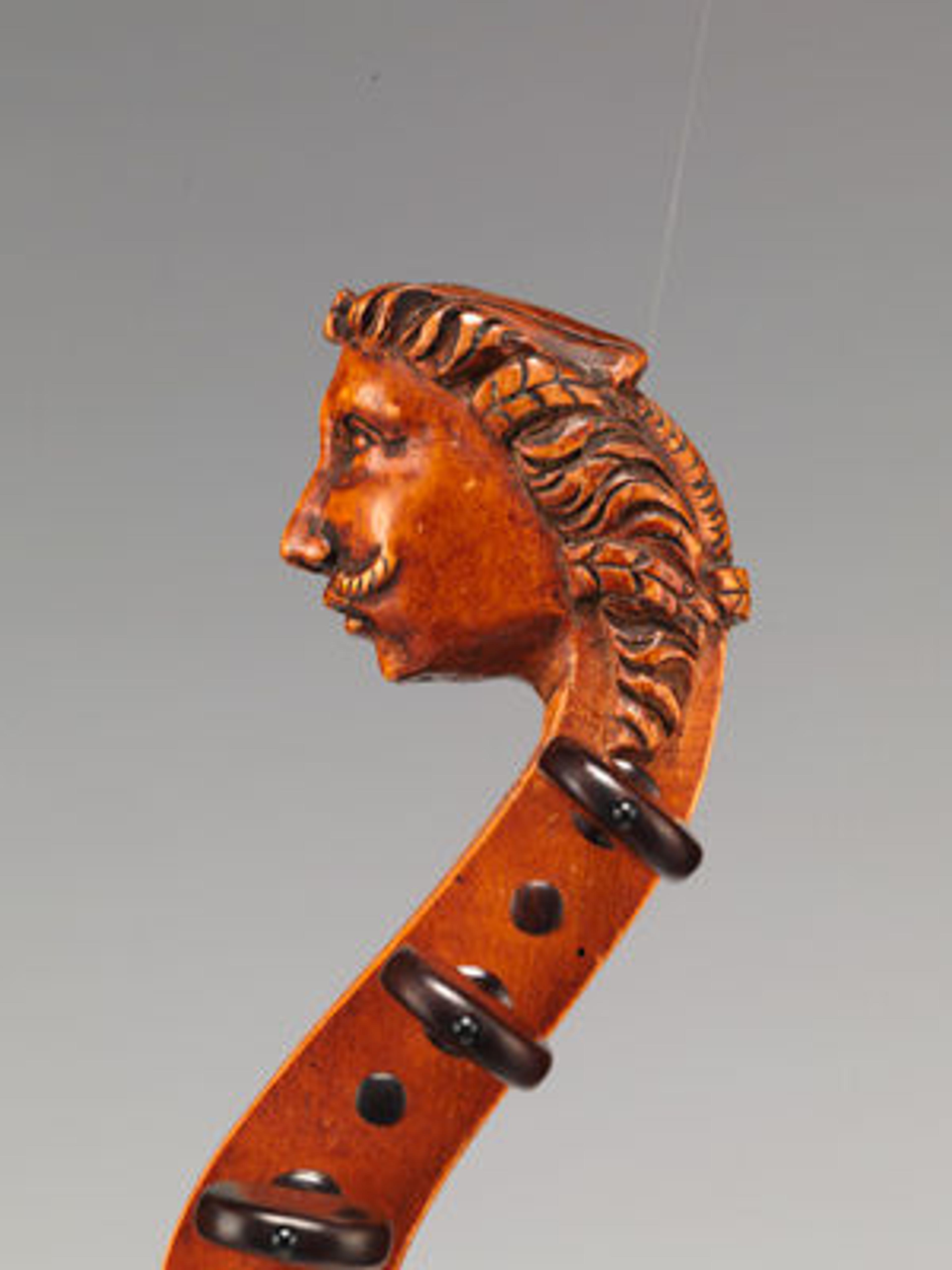Delicate, Quiet Beauty: The Viola da Gamba

Viola da gamba, 1640–65. London, England, United Kingdom. Maple, spruce. The Metropolitan Museum of Art, New York, Purchase, Robert Alonzo Lehman Bequest, 2009 (2009.42)
«There aren't many things in this world more exquisite, beautiful, or noble than the viola da gamba. As a practitioner of the instrument myself, I hold a strong bias, but let's be honest: Who could refrain from pausing in front of the cases of viols on display beside the Michele Todini harpsichord on a walk through The André Mertens Galleries for Musical Instruments?»
Those of us who grew up playing music are likely more familiar with the so-called "modern" string instruments, those that propagate today's great orchestras. The string sections of the Berlin and Vienna Philharmonics, the Cleveland Orchestra, and even our own New York Philharmonic all use what music historians call "violin family" instruments—violins, violas, and cellos—in a modern setup, with innovations that have evolved over the last two hundred years to fill the late Romantic and modern concert halls with sound: steel strings, end pins, chin rests, and modern bows.
Viols possess none of these artifacts of industrialization. Their delicate bodies are made with thin slabs of wood, strung with gut strings and frets, and are played da gamba, or on the leg. In short, these instruments are meant for the court, for the domestic interior, and for the cultivation of a quiet beauty, the sort of which is difficult to come by in today's loud and fast-paced world.
A museum setting gives viewers the opportunity to easily appreciate their physical beauty. Take, for example, the Met's recently acquired English bass viol: Though it was made by a maker whose name was lost to history, this instrument presents us with a wealth of information about the viol's history and its construction. This relatively small English bass was made in mid-seventeenth-century London, at a time when viol making had been refined to such a degree that the instruments were desired in equal part by royalty and citizens alike. (No small feat for the annals of cultural diplomacy!) Additionally, nearly everything about this instrument is original—from the delicate purfling along the sides and the rosette on the front, to the pegs and bridge—an extremely rare feature in any old viol of any size.
Playing such a rare instrument can teach the performer a lot as well. Last year I was lucky enough to play this instrument in a gallery concert, and was astonished to find that difficult passagework became easy while holding a nearly unaltered specimen in my hands. Keep your eyes peeled for information about another demonstration of the viols in the Met's collection on October 1, so that you might hear this instrument in person.

For more information about this family of instruments, my recent Heilbrunn Timeline of Art History article about the viol discusses the history of the its migration through Europe, its repertoire, and other interesting facts. Did you know that a prominent English portrait painter (many of whose works adorn the Museum's walls) was an avid player?
Left: Viola da gamba (detail), 1640–65. London, England, United Kingdom. Maple, spruce. The Metropolitan Museum of Art, New York, Purchase, Robert Alonzo Lehman Bequest, 2009 (2009.42)
Elizabeth Weinfield
Elizabeth Weinfield is an editorial associate in the Digital Department.